Yarn is the most critical part of knitting. There are so many different types of yarn, from the softest and most luxurious to the most affordable. It is important to understand your end goal to pick the ideal yarn. This makes all the difference in your end result.

I was introduced to knitting many years ago, and I thought it was only for old ladies. I was wrong because I loved it instantly. I did not realize how deep the world of knitting went. I was quickly introduced to a massive amount of knitting yarn that I had to figure out on my own. It is easy to be overwhelmed quickly, and that is the purpose of this article. Keep reading to find out all the details about the different yarns available.
What is Yarn?
Yarn is a material used for many different arts and crafts projects. It is most notably used for knitting and crocheting. Yarn is a material created from different fibers. They are made from either natural or synthetic fibers. Natural fibers come from animal or plant fiber. Synthetic fibers are made by man.
All the different yarns have different textures that change the look and feel of the yarn. Each yarn type is best for specific types of projects. It is helpful to have a clear understanding of the yarn fiber types to make your project a success.
Weights of Yarn
The fiber of yarn comes in different thicknesses. This is known as yarn weight. There are eight different weights of yarn; each one is ideal for a specific type of project.
Lace
While lace is not eh chart of yarn thicknesses, it is number zero. It is the thinnest and lightest type of yarn. It is used for knitting lace patterns, including scarves and shawls. It is also called a thread, cobweb, and light fingering weight yarn.
Super Fine
The is number one on the chart, and it includes fingering yarn and sock yarn. It is a little thicker than lace and may be used to knit shawls. This creates fine stitches. It is ideal for socks, mittens, and hats. You can use it to make a sweater, but it will take a significant amount of time. It has beautiful results. A knitter should use a needle size is 1 to 3 for this yarn thickness.
Fine
Fine thickness is number two on the chart. This yarn thickness includes baby and sport weight yarn. It is ideal for scarves, hats, socks, sweaters, and cardigans. The ideal knitting needle size for this yarn thickness is 3 to 5.
Light
Number three on the thickness chart is lightweight yarn. This includes DW weight, lightweight, and worsted weight yarn. This yarn is ideal for knitting socks. The appropriate needle size for this yarn is 5 to 7.
Medium
Medium weight yarn is number four on the list. This includes worsted yarn weight and aran weight yarn. It also has afghan yarn on the list of medium weight yarns. This is a common weight for beginning knitters and works great for all projects. The ideal needle size for this weight is 7 to 9.
Bulky
Bulky thickness yarn is number five on the list of yarns. The types of yarns that fall into this category are chunky yarn, craft yarn, and rug yarn. This bulky weight yarn helps you to create a project quickly. It gives you a chunky looking finished project, which is perfect for a cowl or scarf. The ideal needle size for this yarn is 9 to 11.
Super Bulky
Super Bulky yarn is number six on the chart. Bulky yarn and roving yarn fit into this category. It is great for knitting a hat project in no time. This yarn is incredibly warm and gives your project a bulky look. The ideal needle size for this is 11 to 17.
Jumbo
The thickest yarn on the chart falls at number seven. This is the jumbo thickness. Jumbo yarn and roving yarn falls into this category. This is great for blankets, scarves, and decor for your house. The ideal needles are sizes 17 and up.
Types of Yarn
Wool
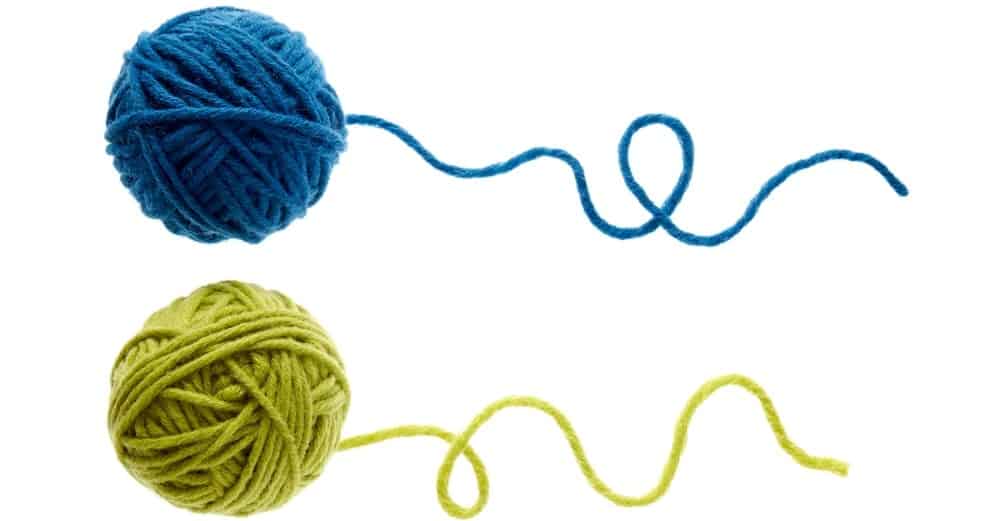
Wool yarn is among the most common yarn that is available to knitters. It has many beneficial properties. It excels at keeping you warm in cold temperatures. It is durable and resists moisture. It also helps keep you cool when the weather turns hot. The wool fiber is breathable and pulls moisture away from your body. Wool is often mixed with other fibers to help the wool act more durably.
Wool fabric has property contained naturally within it that allows for it to extinguish the fire. This is primarily only found in wool. Wool is even found in baseballs, which may be a little known fact to some. Wool is easy to work with and relatively affordably priced. Wool yarn is ideal for sweaters, scarves, hats, gloves, and socks.
Pure and virgin wool is made from animal fleece, typically that of sheep. It is not made from recycled wool. It is a creamy white and can be easily dyed any color. Shetland wool comes from a sheep that is native to the Shetland Islands of Scotland. Icelandic wool creates a yarn that is soft yet rustic. Washable wool has been chemically treated or electronically treated to remove the outer layers of the fiber. These are the fuzziest layers. It does hold its shape after it has been blocked.
The four different types of wool yarn are:
- Fine type wool
- Medium type wool
- Long type wool
- Double type wool
There are some downsides to wool, such as it can be incredibly itching and irritating. Some people are allergic to wool and should not wear wool products. Garments that have been made from the wool may begin to pill after use. For best care, it should be washed by hand in water that is tepid.
Merino Wool

Merino wool is a special type of wool that is fine and amazingly soft. This yarn does come from sheep, but a particular breed is called a Merino Sheep. This is a special class of work yarn because it does not cause any type of allergic reaction, even for those that are allergic to wool. Merino is considered a yarn for extreme knitting because it creates big chunky items.
Like regular wool, merino wool keeps its regular shape when it is blocked. Also, similar to regular wool, merino wool pills, which means it creates fuzzball on the yarn. Merino wool can also withstand its fiber being bent back on itself without breaking.
Cashmere
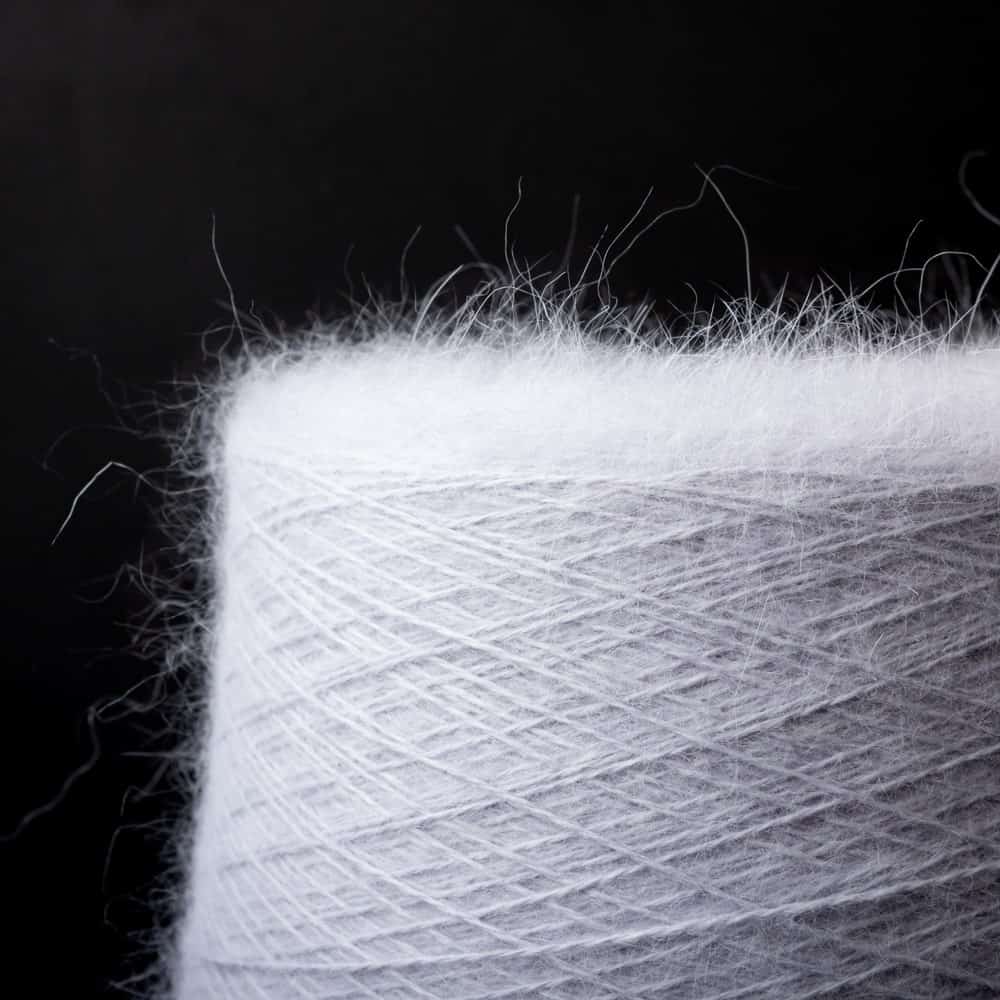
Cashmere is another type of sheep’s wool. It is the softest wool and yarn you can find. It comes specifically from Cashmere goats and other goats. Cashmere is an expensive type of wool and is considered a luxury. It is not as strong as the fiber from sheep. Cashmere goats shed their undercoat every year.
This coat is closer to the skin. It has to be separated from the outer hair. Even though it is called an undercoat, it does not come from under the goats. It comes from their back and mid-side. It takes the fibers from four goats to make one sweater. Cashmere is finer than human hair. The more you wear Cashmere, the softer the fabric becomes.
Most Cashmere is blended with other fibers to make the yarn more affordable. This yarn does not breathe well, but it can be loosely stretched to make it more breathable. The yarn is not itchy. It is ideal for cardigans, gloves, and socks. This yarn must be dry cleaned.
Alpaca
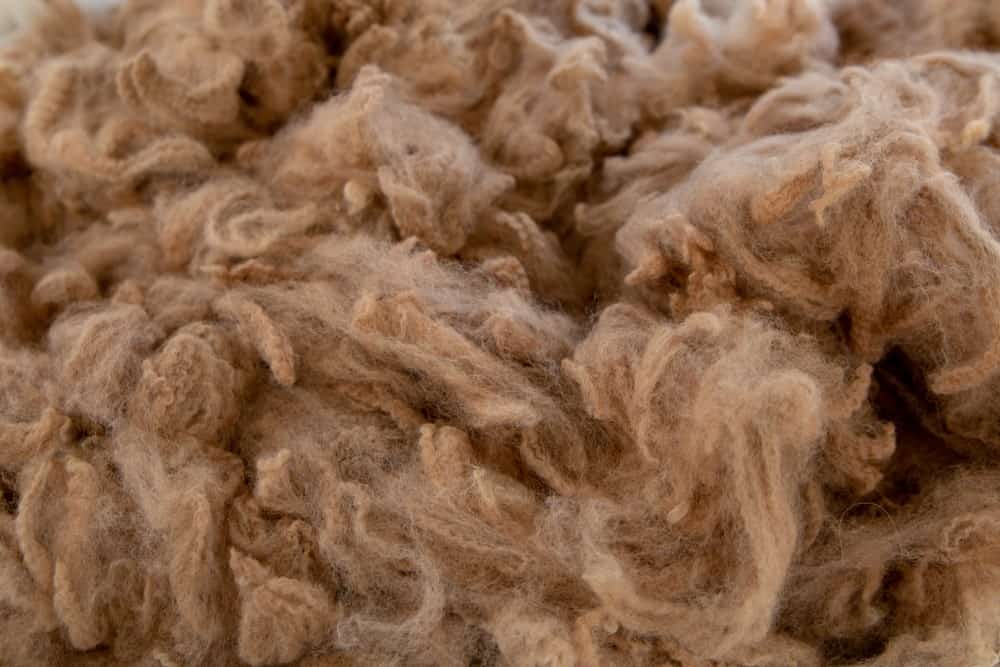
Alpaca yarn is an incredibly warm fiber that is ideal for sweaters. It is a natural work that comes from the Alpaca from South American. The two types of Alpaca yarn are Suri and Huacaya. This yarn is soft and almost like silk. It does not hold the shape as well as traditional wool, does. It is more expensive than a ball of traditional wool.
Alpaca fiber is water repellent, and it does not catch on fire easily. This yarn is a dense and hypoallergenic fiber. It is ideal for sensitive skin, and it is not itchy like wool. It is perfect for clothes and items for a baby. Alpaca yarn can be a blended yarn. It is blended with other fibers that are natural so that it can strengthen the tension in the wool. Alpaca wool does not block well like traditional wool. It must be hand washed gently or dry cleaned.
Mohair
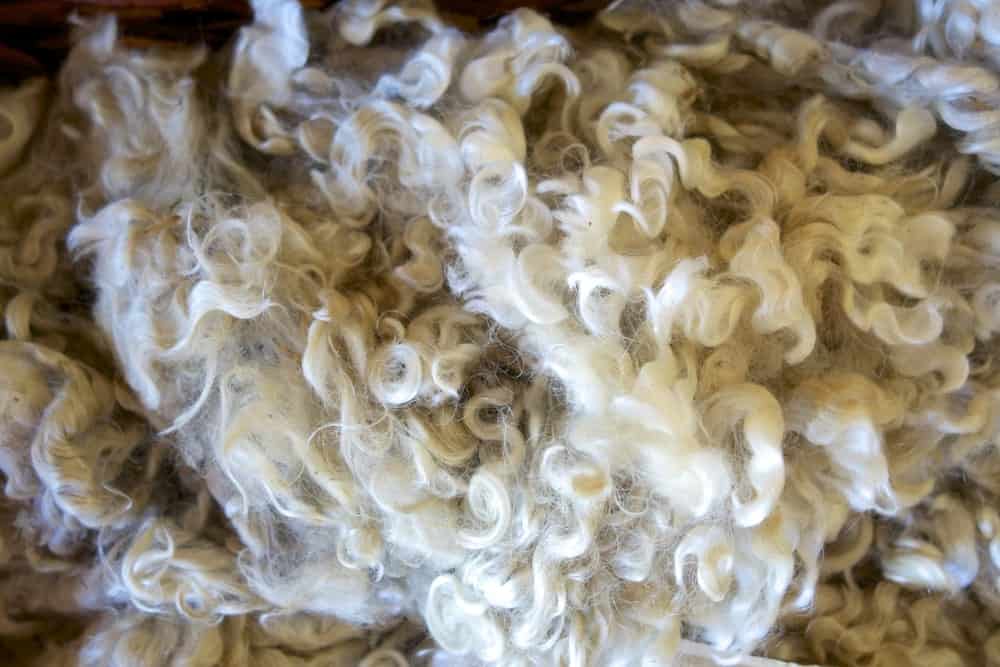
Mohair yarn is soft and beautiful. It is made from the Angora goat hair. It tends to be shiny, resistant, and durable. This is not the same as Angora wool, which comes from a rabbit. This yarn is a fantastic insulator and is great at pulling moisture away from the body.
This is considered a luxury fiber and, as a result, is more expensive than typical wool. It has a high amount of sheen and luster. It has often been called by its nickname, Diamond Fiber. It is one of the warmer animal fibers.
Mohair is ideal for summer and winter attire. Mohair is a great yarn to be dyed. It is elastic and will snap back into shape. It resists sagging and wrinkles really well. It is typically blended with traditional wool or silk to add weight to the light fibers. It is easy to care for as you can put it in the washing machine on the gentle cycle. You can also have it dry cleaned.
Some do have a reaction to Mohair, and it causes them to feel itchy, even though it has a low risk for allergic reaction. It is really fluffy, which makes it challenging to knit. If you have a project with defined stitches, this may not be the right yarn for the job.
Organic Yarn
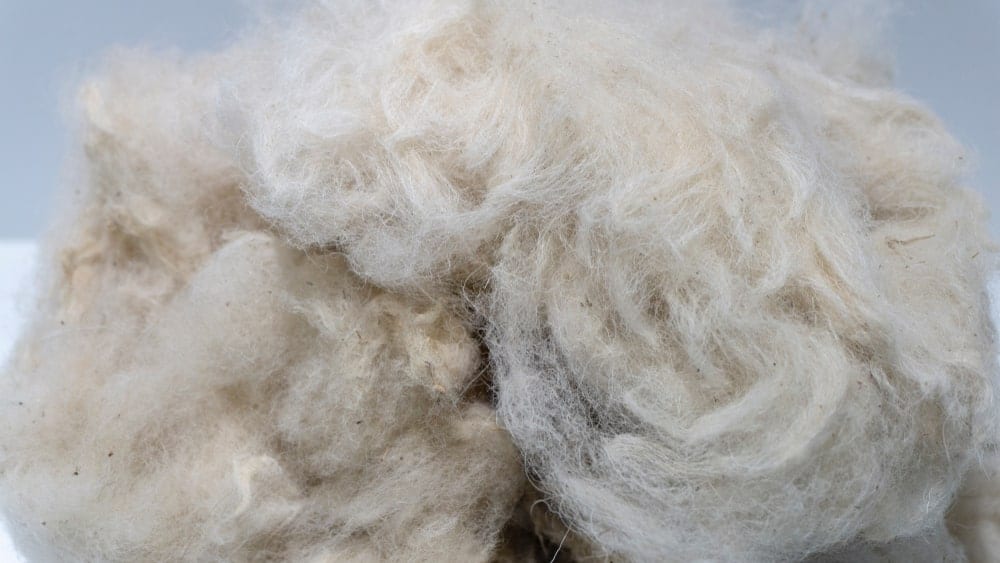
Organic yarn is a wool that is created without any chemicals. It comes from sheep that do not have any synthetic or chemical additives. The sheep do not have antibiotics, dips, or drenches. The only thing used on this wool yarn is detergent and hot water. This yarn comes from healthy sheep, and it is great for the environment. Organic yarn is great for garments that are knit.
Nylon
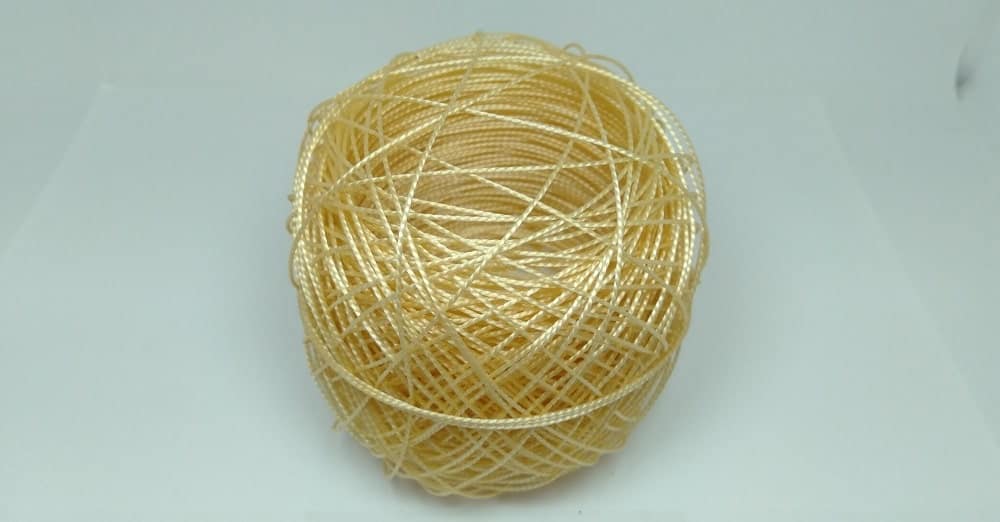
Nylon is a synthetic fiber that was created to be a viable alternative to silk. It has similar qualities to rayon in that it is shiny, smooth, easy to wash, and remains cool to your touch. Nylon is durable and holds up well to most wear and tear. It is easy to care for in that you can wash it in a washing machine. These fibers are elastic and strong. They can resist abrasion. These fibers can be easily dyed in any color.
Angora
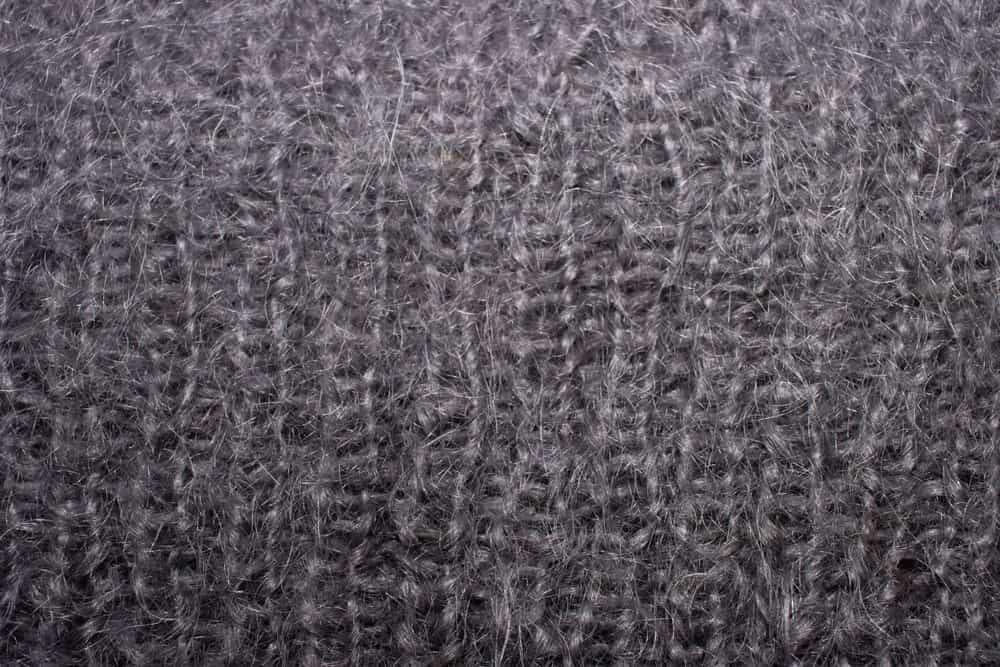
This yarn is considered a luxury yarn because it is one of the finest fibers from an animal that you can find. It also tends to be an expensive yarn. It comes directly from the fur of an Angora rabbit. It is light and soft. It is warm, much warmer than wool from sheep. It is similar to mohair in that it should not be used for stitches that are intricate.
This yarn tends to slip, so textured knitting needles work best. It will not resist stains, but it will not retain odors. It is often blended with acrylic to make it slightly less elastic. It must be washed by hand in cold water only or dry cleaned. It must dry while it is laid flat.
Rayon
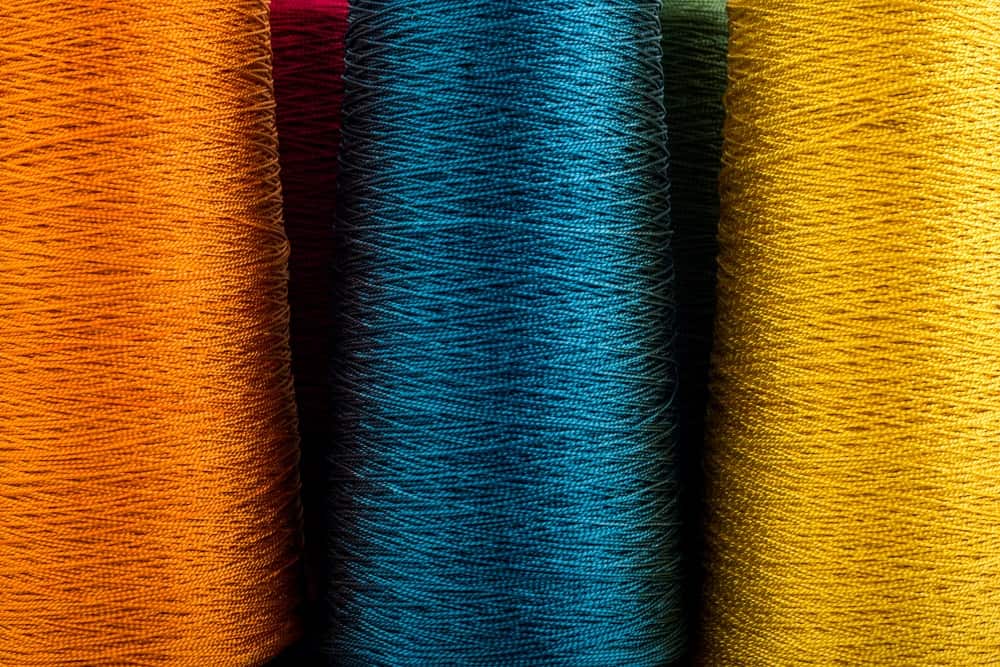
Rayon is one of the oldest fibers that are man-made, but it does mimic some of the natural fiber properties. It is smooth, shiny, and soaked in color. This material is comfortable and cool. It pulls heat away from your body, making it a great material for the hottest months.
It is not great at holding onto heat. It is not very elastic, nor does it age well with time. There are many variations of rayon that are considered novelty yarn (discussed later in this article). Most often, this material can be washed by hand, but you should read the instructions on the yarn to be certain.
Cotton Yarn

Cotton yarn is one of the most common types of yarn. It is fairly inexpensive. Cotton yarn comes from a cotton plant. It grows in the warmest climates. Cotton yarn is light, strong, and breathes well. It is a great yarn for summer clothes, potholders, and dishcloths.
There are many different types of cotton yarn, from fine to heavyweight. You can wash cotton yarn in the washing machine. It does not block well and may not hold its shape. Your stitches will not look uniform. You will also be able to see any imperfections in your stitches. Cotton can absorb more than 27 times its weight in water.
Silk Yarn
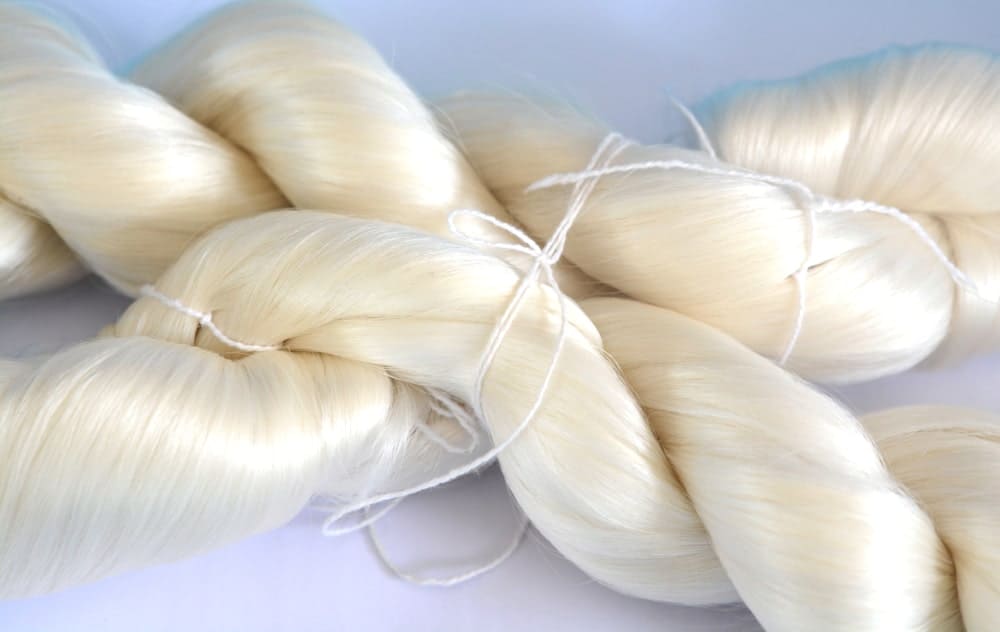
Silk is a fiber made of natural protein. Some forms of silk are woven into textiles. The protein fiber is made of fibroin and produced by insect larvae that form cocoons. Silk yarn is relatively easy to work with, but it can be slippery. It is helpful to be experienced with knitting before you attempt to knit with silk yarn.
Silk yarn is one of the more expensive fibers you can buy. It is strong, shiny, and feels great on your skin. Silk is one of the strongest of all the natural fibers you can find. You can find silk blends that have cashmere, silk, and merino wool. Silk is not a warm fiber, and it is best for summer projects. It must be dry cleaned, and handwash gently.
There are two types of silk yarn:
- Reeled silk yarn – this is a filament yarn. It is created when the cocoons go through processing when the silk is reeled off in filaments that are continuous. The silk thread is fine, and it can barely be seen by the eye. Many of the filaments are spun together to make silk yarn of different weights.
- Spun silk yarn – this is a spun yarn. This silk is created from short lengths of silk that is taken from cocoons that are broken or damaged during the processing. They are then twisted together to make the yarn.
Self-Striping Yarn

Self-striping yarn is when many colors are spun together in ways that are unique to create different effects. The process for dying the yarn has evolved with technology. They are dyed in different patterns. Another name for this type of yarn is painterly yarn colors. The color of this yarn changes as you use it to knit.
Your finished project has colored stripes in it. The striped color change can be bold or subtle, depending on the specific type of yarn. It will look like you have changed the yarn color, but in reality, it is all the same yarn. This yarn is ideal for socks, cowls, scarves, sweaters, and blankets.
This is a great choice for beginning knitted, especially those that want to create a project that is colorful. The color changes with each strand, so you do not have to change yarn to change color. The yarn has been dyed in colors that go together. You will not have to wonder if all your colors will go together.
This yarn tends to be a little more expensive than other yarns, especially solid colors. You will have to make sure that the color variation in the yarn will match the stitches and patterns of your project.
Hemp Yarn
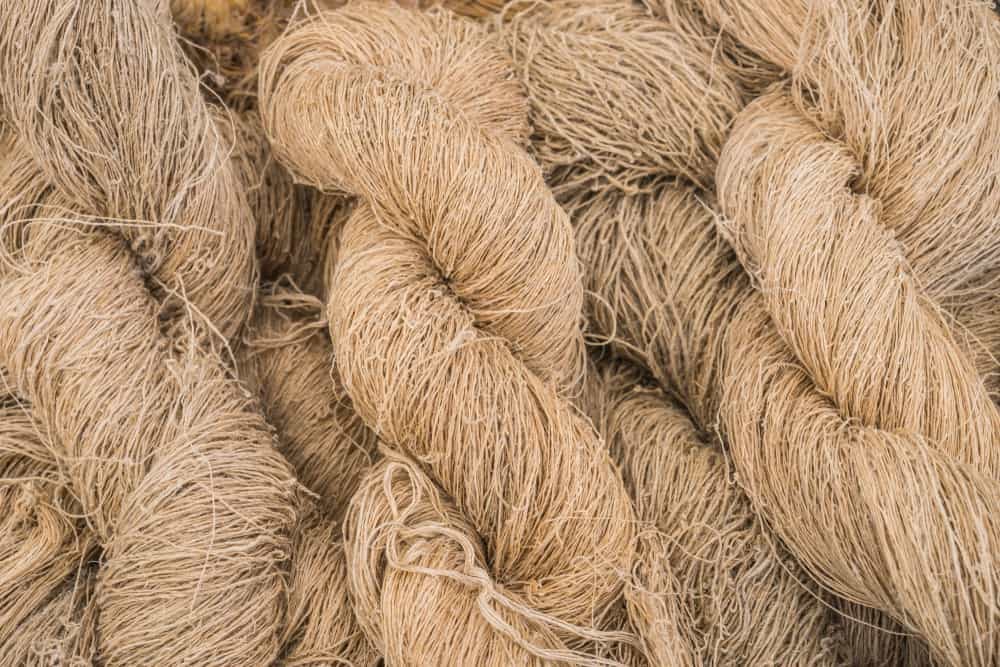
Hemp yarn is a natural fabric that is a textile made from the fibers of the Cannabis sativa plant stalk. This yarn is strong and has been used in textiles for generations. Hemp has been part of the crafting world since the 1960s, but it is relatively new to the knitting world. Hemp fiber was used mainly for macrame but has expanded to more options. Hemp is friendly to the environment. It is soft on your skin. It is great for socks, sweaters, and coats.
Bamboo Yarn
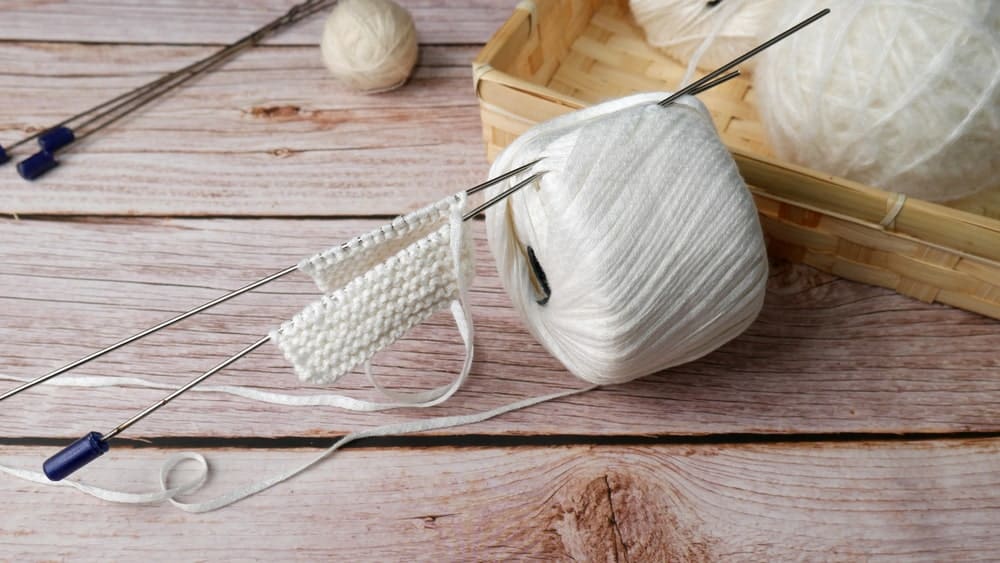
Bamboo yarn is harvested from bamboo grass and then distilled into cellulose. After that, it is spun to bamboo yarn. It is a natural yarn that is not sourced from an animal. It is also environmentally friendly. Bamboo yarn is newer to the world of knitting. It has become popular quickly. It is soft and wears really well. Bamboo yarn is ideal for garments that have a drape. This yarn keeps you cool, and it is breathable. It is often a softer feeling than silk.
Acrylic Yarn

Acrylic yarn is made from a synthetic fiber that is made by man. It is cheaper than many natural fibers. Acrylic yarn washes well and holds its color. It is a great option for inexperienced knitters. Many of the acrylic yarn options are a worsted weight yarn. Acrylic yarn will not be attacked by moths, sunlight, or chemicals. This yarn is ideal for scarves.
Novelty Yarns
Novelty yarns are made of synthetic fibers in a wide variety of textures and colors. They are most often blends of fibers to create unique textures and attract attention. Novelty yarns are a fun way to add a new touch to your project. Most novelty yarns are challenging to work with. There are many different options available to you when it comes to novelty yarn.
Common types of Novelty Yarns:
Bouclé
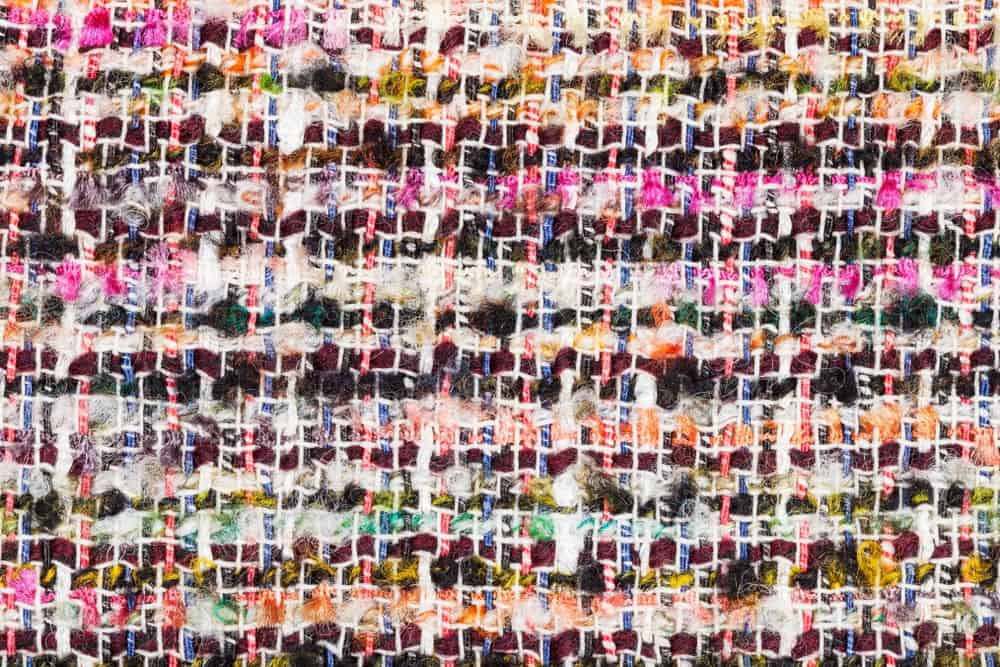
Bouclé yarn is known for its looped look. The word Bouclé means to curl in French. It is created by taking two strands of yarn and combining them together and making sure that one of the strands is loose and forms a ringlet. The rings of yarn are the same size and can vary in size. When the yarn has larger loops, it creates a yarn that is bulkier. It also has a more textured yarn appearance.
Chenille
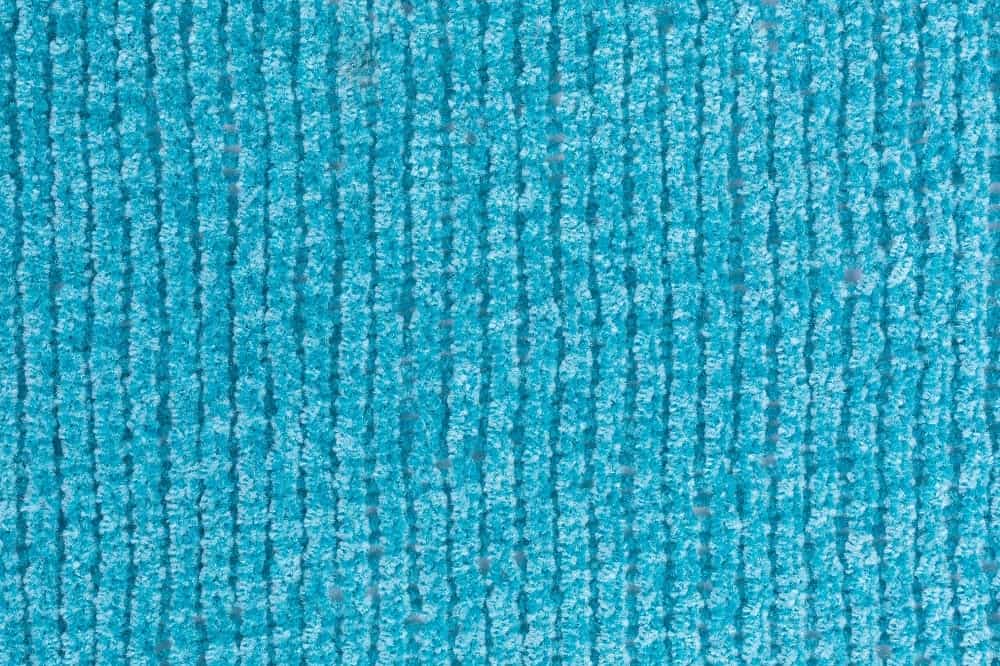
Chenille yarn has a surface that has a fuzzy look the mimics the hairy look of a caterpillar, hence the name. Chenille means caterpillar in French. It has a pile on top of the yarn to make it feel fuzzy and soft. It is smooth like velvet. Chenille is created when loose fibers are wrapped around a core fiber. The fibers are then cut evenly to create fuzziness. Chenille yarn can be silk, rayon, polyester, or cotton. Chenille yarn may be challenging to know with.
Thick-Thin
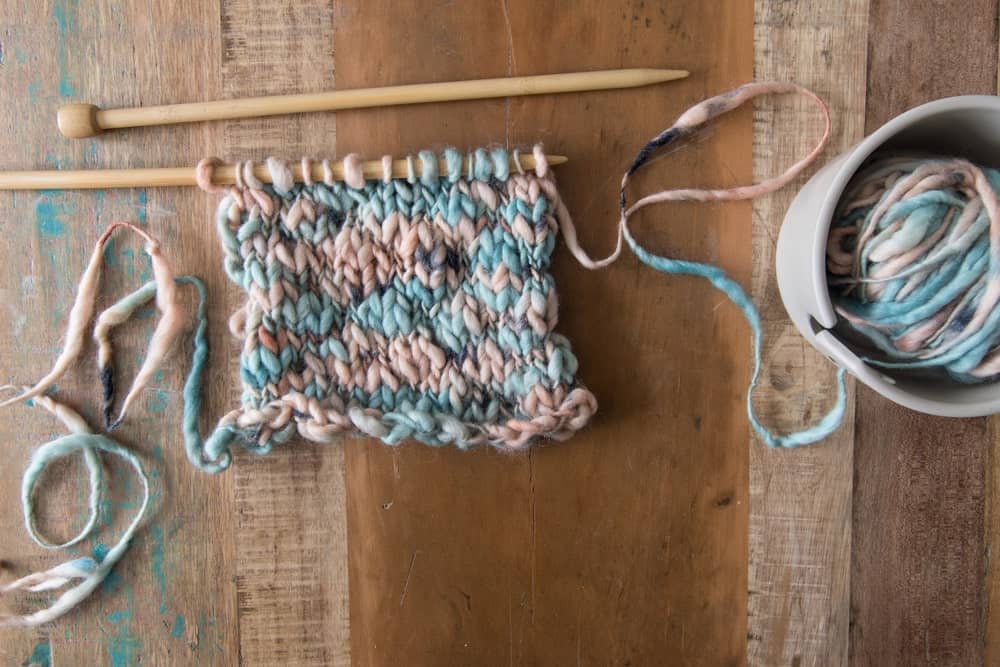
Thick-thin yarn creates a finished product that has sections that are thick and thin. This also gives your product a bumpy look. This type of yarn is a great way to have a unique fabric, but you do not have to work with stitch patterns that are complicated. This type of yarn uses twist, fiber blends, and slubs to change the gauge and shape of the finished item. When you use this type of yarn, you have to be sure to create a swatch to ensure you have the right gauge.
Faux Fur

Faux Fur yarn is strands of fiber that is super fluffy. It has a base thread that is made of nylon. It is incredibly strong. Your finished product will look just like faux fur. This yarn is incredibly soft to the touch. This yarn does not use any animal fiber. This yarn is ideal for baby items, stuffed animals and to create fun trim for clothes.
Faux fur yarn is a subset of novelty yarns that are oh-so-soft to the touch! These synthetic fiber yarns mimic the appearance and feel of real fur without using any animal fibers. Use faux furs for snuggly baby projects, stuffed animals, or as a fun and funky trim to your next high couture piece!
Railroad Ribbon
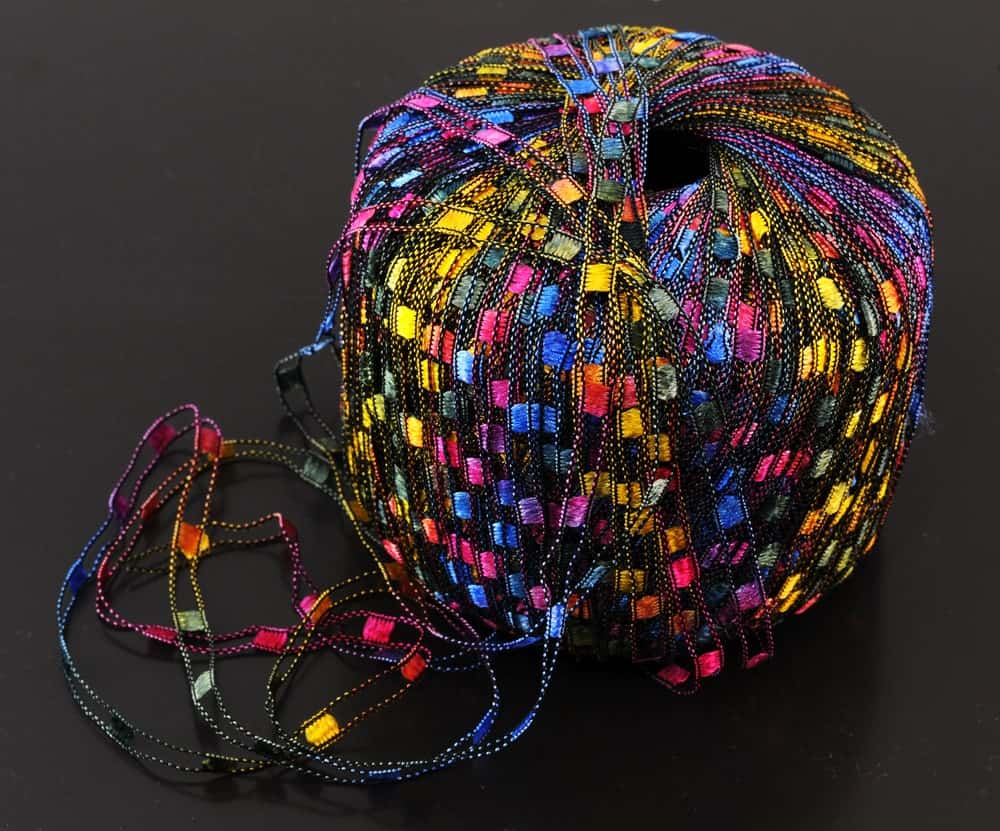
Railroad Ribbon yarn is also referred to as Ladder Ribbon yarn. This yarn has panels of color strung between two strands of thread that are parallel to the tracks. The rows of a thread may be the same color as the panel, or it could be black or some color that goes with the panel color. With this yarn, you can use the simplest stitch and create a magnificent product.
This yarn is ideal for scarves, jackets, sweaters, shawls, and tops. Railroad Ribbon can also be used to make jewelry and necklaces. If you are experienced, you can combine two different colors of Railroad Ribbon together to get an exotic look.
Polyester Yarn
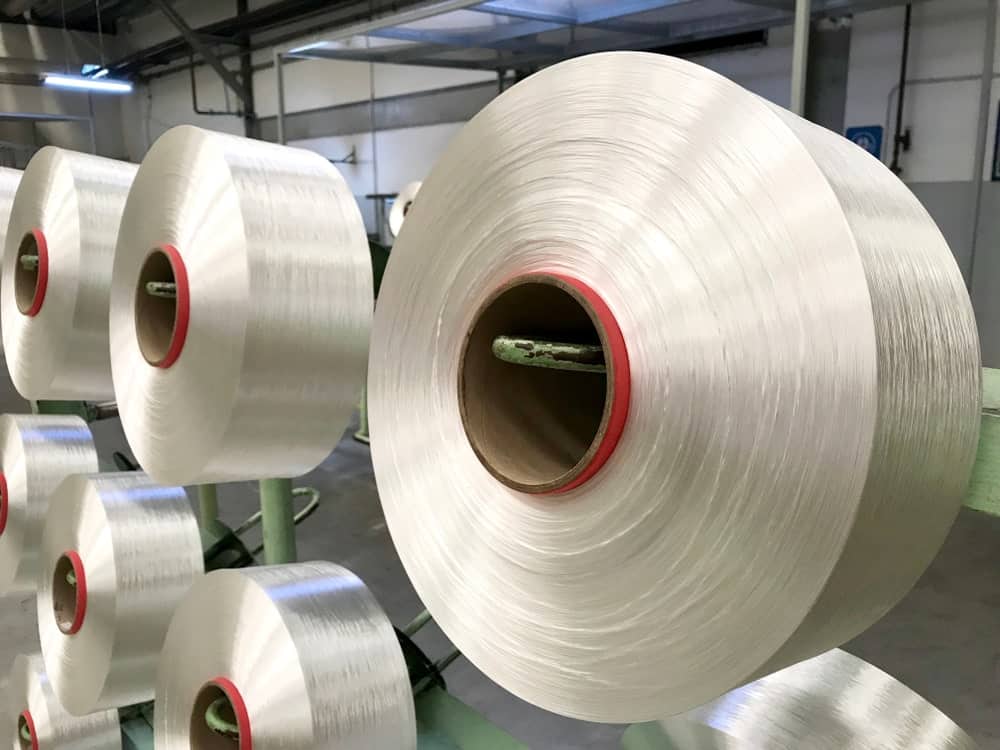
Polyester yarn is typically a blend of different yarns. It usually includes wool and cotton and perhaps one more fiber. Many of the novelty or bulky yarns are considered polyester. When polyester is added to a blend, it creates durability for the yarn. It has to make the end result more structurally sound.
Polyester blends may include some natural fibers, but they do not always. Polyester yarn is breathable and wicks moisture away from the body. It is perfect for any season or type of weather. It is easy to care for because it can be washed in a washing machine. You do not have to wash it by hand.
Material made from polyester typically keeps its shape. This type of yarn may feel scratchy on your skin. When using polyester, you may not be able to see the definition of your stitches. This yarn is ideal for accessories that you use often and outerwear.
Glow in the Dark

Glow in the Dark yarn is usually found in one of two ways. The yarn may have a thread woven into it that is reflective. Or the yarn may have been treated with a dye that is fluorescent. A reflective thread can be added to any color of any yarn. It does tend to work best on colors that are lighter. The reflective thread works anything it catches the light. The fluorescent dye will begin to fade over time.
Ribbon Yarn
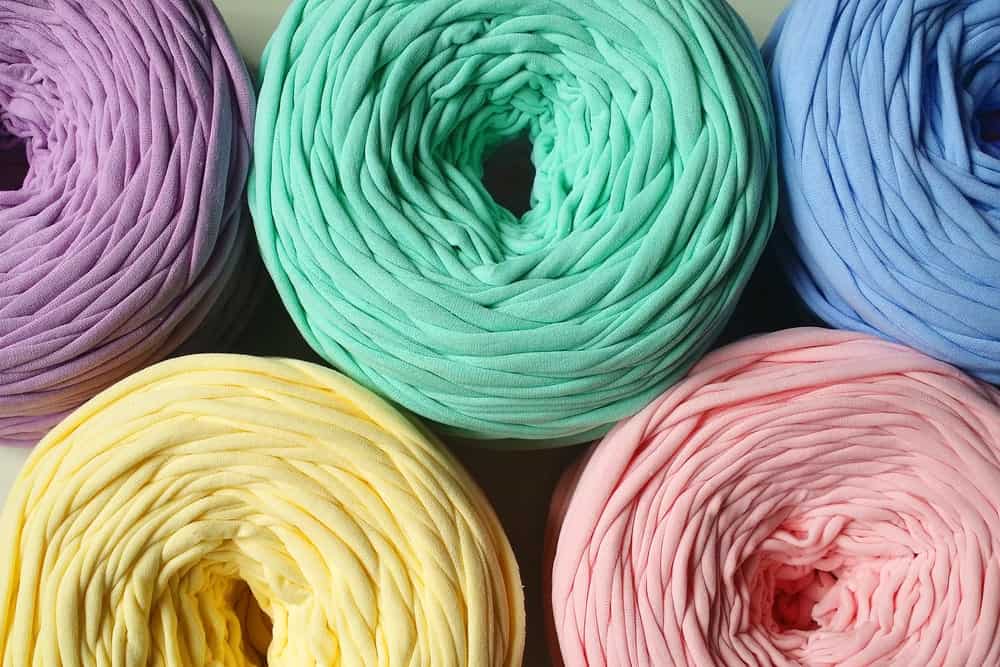
Ribbon yarn can be made from many different fibers. It can include cotton, nylon, or rayon. It feels and looks like a craft ribbon. It can be found in solid colors or variegated colors. This has been part of the kitting world since around 2000. This type of yarn is typically flat and lightweight until you create a project with it. Ribbon yarn is ideal for belts, headbands, and bags.
Ribbon yarn will twist and spin around while you are knitting with it. It may be challenging for you to keep it under control. You will have to constantly pay attention to your yarn to make sure it does not twist. The finished product looks twisty but can give the appearance that your stitches are not even. If you have delicate work in your piece, this is probably not the best yarn for the job.
Once you knit the ribbon yarn, it can become heavy, so a sweater is not the best creation. Ribbon yarn is not forgiving, and if you have any type of snag in your needles, it will get caught. If you use wooden needles, make sure your tips are smooth. If you want the ribbon to be more durable, you should consider pairing it up with another type of yarn.
Specialty Yarns
A specialty yarn is intended to create a special kind of look in your final product. These types of yarns come in many different colors. They add pop and texture to your finished project. They are typically made of synthetic yarn blends.
Tweed

Tweed yarn has a main color of the yarn, and there are fiber bits through the yarn in colors different from the main color. It typically has multiple flecks of color and plies that are added while it is spinning. The traditional way to make tweed yarn is to dye the wool is separately batched and then mix in the accent color flecks during the spinning process. The different fibers take on color in different ways during the process. These fibers are what give the yarn its color effects.
Heather

Heather yarn is a worsted weight yarn that has been dyed and spun to a 100 percent medium grade yarn. The heathering is created when many varying shades are blended together to create one unique color. The yarn loft and become much softer after it has been washed.
Marled

Marled yarn is created when plies of different colors of yarn are twisted together. This creates one strand with many colors weaving around one another. It can have many different levels of plies. There are many specialty groups of marled yarn.
Wool Blend Yarns

Yarns that are a wool blend are exactly what the name states. They are blended yarns that are wool and other fibers. They may include cotton, synthetic materials, or silk. The purpose of blending different fibers together is to create the best elements of the various fibers into one super fiber. One of the most common yarn blends you will find is a 50 percent cotton and 50 percent wool blend. This yarn is perfect for creating cozy and warm items.
FAQs
What Are the Major Types of Yarn?
There are three basic classifications of yarn. This includes textile yarn, ply yarn, and filament yarn. The textile yarn has a staple fiber with are short natural fibers used to make the yarn. Ply yarn has one or many strands of staple fiber yarn that are wound. Filament yarn is wound from long continuous filaments.
Which Yarn is the Strongest Yarn?
A silk blend yarn is the strongest one you can buy on the market. Typically, you are going to find a silk, cashmere, merino blend and that is the strongest. This yarn is ideal for items for summer. This blended yarn has the same tensile strength as steel.
What Yarn is the Thickest One You Can Find?
Big loop yarn is the thickest yarn you can buy on the market. It is merino wool.
What Causes My Yarn to Become Fuzzy?
When your yarn becomes fuzzy, it is because it has pilled. Pilling happens when the loose fibers of the yarn get twisted, matted, or tangled. They begin to form balls on top of the sweater or other material. Items that are knit always begin to pill when after a while of not being used. If there are random threads on your yarn, do not pull them. This will only cause the knit to become uneven and stretch.
What Do I Need to Know About Acrylic Yarn?
The acrylic yarn contains chemicals and other toxins that may be harmful to humans. This type of yarn is commonly used in knitting practices. You should understand the difference in all the yarns so you can pick the right yarn for you.
How Do I Care for Different Types of Yarn?
It is important that you care for your yarn properly. This will ensure you have the best quality items and they always look their best. Cotton, ramie, and linen yarn can be washed in a washing machine. It must be washed on the gentle cycle with cold water, but you can use warm water.
Acrylic and other synthetic yarns can be washed and dried the same way you wash your regular clothes. This yarn will not shrink. If you have an unknown type of fiber, you want to be sure to hand wash the yarn with cold water, and it dry flat.
How Many Balls of Yarn Does it Take to Knit a Blanket?
It takes a large amount of yarn to finish a blanket. You do not want to skimp on the yarn and have your blanket end up short. It typically takes about 13 to 18 balls of yarn to complete a blanket. The more colors contained in your blanket, the more yarn it will take to complete it.




